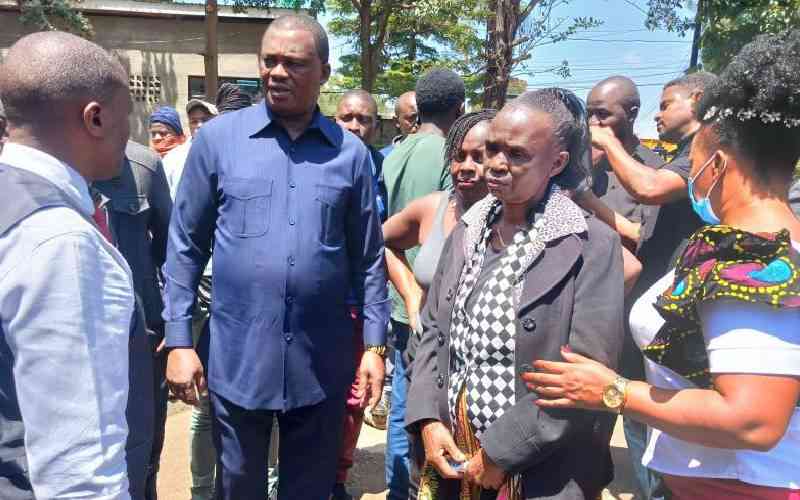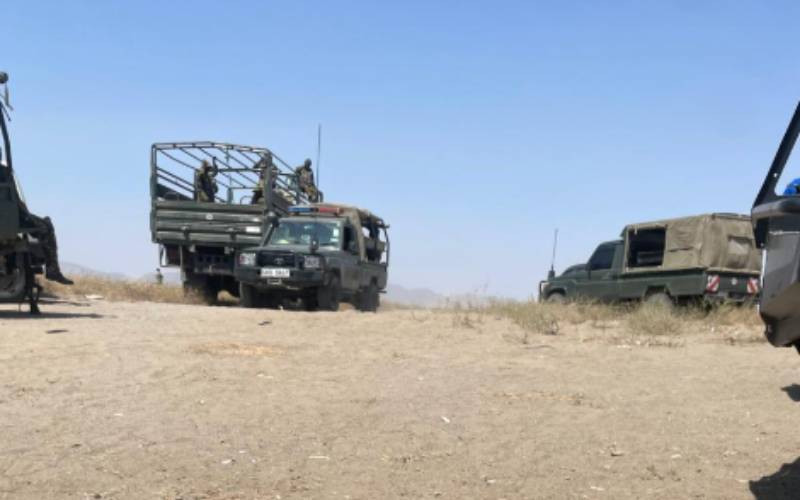
The huge amounts of water that will be required to boost oil production activities in South Lokichar could become a source of conflict among residents in the water-scarce region.
Oil firms pump lots of water to pressurise oil wells for the ‘black gold’ to flow to the ground.
While oil companies use far much less water compared to agriculture, and hydropower production, different sector players acknowledge that water is the most expensive input to the extraction processes.
It is also the most important input in the oil and gas industry.
This raises concerns about the amount of water that Tullow Oil will be injecting into its wells in an area where residents have to walk kilometres to reach such a scarce resource that they share with livestock.
This is even as the area reels from harsher weather conditions that have over time seen the water points turn into puddles of mad at best and dry at worst.
Tullow Oil has in the recent past said it is negotiating with the County Government of Turkana for the use of water resources in the area. It is expected to reach an agreement in the third quarter of this year.
While the firm is not specific on the water body that it expects to tap the resource from, it is expected to use Turkwel Dam that sits on the border of West Pokot and Turkana Counties.
Executive director and founder of Friends of Lake Turkana (FoLT) Ikal Angelei noted that huge volumes of water have been used by the company while testing wells and even larger amounts will be used during the commercial production phase.
“We are using a lot of water in a region that is water scarce. We know that water from the Turkwel Dam is being used to undertake oil operations. On average, four barrels of water are used in the production of one barrel of oil. We are not at the level of (commercial oil) production and we are struggling with water,” she said. “How do you tell communities that we are lacking water but the commodity is going to be used for oil production and yet they do not have water for drinking or for their animals?”
She observed that there are lots of risks that people are not talking about because everyone is looking at the fiscal aspect.
“We talk about the economics of the oil project but not the social and environmental impact of oil. This is at a time where countries are moving away from fossil fuels… it is also at a time when everyone is talking about climate change. These are realities that communities are struggling with but also do not know which one do they tackle first.”
Tullow Oil hopes to get into an agreement with the county government to allow it to use water from one of the water bodies in the area.
The major water bodies in the oil-rich county include the Lake Turkana and Turkwel River and Dam, with Tullow Oil eyeing the dam that sits on the border of West Pokot and Turkana Counties.
Stay informed. Subscribe to our newsletter
In Reuters’ report last February, Tullow Oil management in Kenya said it expected to reach an agreement with the county officials by mid this year.
Tullow Kenya Managing Director Marin Mbogo noted that securing the water deal was among the major requirements needed for the partners in the Project Oil Kenya to commit and other resources to its commercial production phase.
This, Final Investment Decision (FID), is expected to happen towards end of this year. “I would probably realistically put it more for quarter three in terms of landing that agreement,” Mbogo told Reuters in February, referring to the deal organising the way Tullow can tap a body of water straddling two counties in northwestern Kenya.
“(It’s) one of those things we absolutely need before we can get to FID.”
Human consumption
Turkana County was in 2013 found to have a water aquifer beneath that could reportedly cater for Kenya’s water needs for 70 years.
Preliminary tests, however, found the water not fit for human consumption and can also not be used on livestock or agriculture. It would instead require costly and energy-intensive desalination processes.
It is however not clear whether this water can be used for the oil production purposes including the cost implications of bringing the water to the surface.
The activists observed that the Government needed to strongly check the spending at the oil fields, noting that failure to do so might affect the returns that the country gets once commercial production starts.
“We need to think about the debts that are already there. Tullow says it has spent Sh200 billion so far in the Turkana Basin when looking for oil and needs a further Sh200 billion for the pipeline and the upstream development. The Government has borrowed some money for the capacity building while the Early Oil Pilot Scheme will be money consuming,” said Charles Wanguhu, coordinator Kenya Civil Society Platform on Oil and Gas.
“As soon as we start production, these are the things that will kick in and we will start paying these debts. There is a risk that we might have spent quite an amount before we start production.”
The State last year started a process to audit Tullow Oil’s expenditure.
A preliminary reported, according to the Petroleum Ministry, found that the firm has spent about Sh180 billion – largely within the Tullow’s claim of spending about Sh200 billion between 2010 and 2016 – but it is, however, undergoing further scrutiny before the final report is concluded.
Such scrutiny, Wanguhu noted, would guard against fictitious claims by oil companies.
“When an oil company says it spent Sh200 billion, it needs to be audited to make sure that this money was spent on necessary areas. In the oil sector, if a company drills and finds no oil, that cost is borne by the company.
Where they find oil, then we will look back at those costs and forms part of the costs that it will recover when commercial production starts,” he said.
“When they say they spent Sh200 billion, the Government has to ensure that some of the costs were not transferred from other blocks where they did not find oil.”
 The Standard Group Plc is a
multi-media organization with investments in media platforms spanning newspaper
print operations, television, radio broadcasting, digital and online services. The
Standard Group is recognized as a leading multi-media house in Kenya with a key
influence in matters of national and international interest.
The Standard Group Plc is a
multi-media organization with investments in media platforms spanning newspaper
print operations, television, radio broadcasting, digital and online services. The
Standard Group is recognized as a leading multi-media house in Kenya with a key
influence in matters of national and international interest.
 The Standard Group Plc is a
multi-media organization with investments in media platforms spanning newspaper
print operations, television, radio broadcasting, digital and online services. The
Standard Group is recognized as a leading multi-media house in Kenya with a key
influence in matters of national and international interest.
The Standard Group Plc is a
multi-media organization with investments in media platforms spanning newspaper
print operations, television, radio broadcasting, digital and online services. The
Standard Group is recognized as a leading multi-media house in Kenya with a key
influence in matters of national and international interest.






